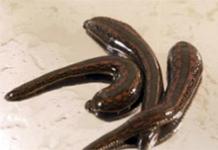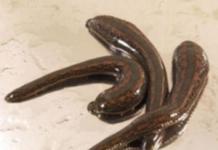Scindapsus aureus is the most unpretentious species of scindapsus in cultivation, powerful tropical vines, to which the British gave the nickname “devil's ivy”. There is an alternative name for this plant - golden pothos.
In indoor conditions, golden scindapsus is grown for its beautiful leathery leaves with a golden tint; indoors it blooms quite rarely. Since golden scindapsus is a vine, it needs support for the normal development of the flower. If there is strong support, scindapsus shoots grow very quickly and are pinched for branching.
Golden scindapsus, home care
Tropical scindapsus does not require tropical heat when kept at home. In summer, room temperature is enough for him, up to 24°C, and in winter the main thing is that it does not fall below 12°C and, preferably, does not rise above 16°C.
Golden scindapsus does not require bright lighting and grows well in diffused light or in partial shade. Direct sunlight on the leaves of the plant can cause them to burn.
Water the golden scindapsus from spring to autumn regularly with settled and lukewarm water. The soil in the flower pot should dry out, but it should not be allowed to dry out completely. In winter, scindapsus is watered less intensively, but watering is not stopped completely.
Scindapsus loves moist air; it needs to be sprayed both in the morning and in the evening. You can also wipe its leaves with a damp cloth. It is also necessary to spray the surface of the supports. In winter, scindapsus should be kept away from heating radiators. It would be a good idea to place the flower pot in a tray filled with wet expanded clay.
 The soil for scindapsus needs to be loose, fertile, slightly acidic or neutral. You can prepare this by mixing turf, leaf soil and sand, maintaining their ratio of 1:3:1. A good drainage layer is also necessary.
The soil for scindapsus needs to be loose, fertile, slightly acidic or neutral. You can prepare this by mixing turf, leaf soil and sand, maintaining their ratio of 1:3:1. A good drainage layer is also necessary.
Feed golden scindapsus from spring to autumn once every two or three weeks with liquid mineral fertilizers. These plants are replanted in the spring, young ones - annually, adults - once every three years.
Golden scindapsus is propagated by stem and apical cuttings, each of which bears two or three leaves. They are rooted in a mixture of sand and moss in a small greenhouse in conditions of high humidity and a temperature of 20-22 degrees Celsius. Roots appear on the cuttings when they are simply placed in water.
Problems of the development of Scindapsus aureus and their solutions
If the leaves of the golden scindapsus turn yellow but do not wither, then this may be due to a lack of nutrition for the flower and it needs to be fed.
The appearance of brown spots on scindapsus leaves and curling of their tips may be a consequence of the flower being in too dry air. With such symptoms, air humidity should be increased and the plant watered more often.
If there is excess moisture at low temperatures, the stems of Scindapsus aureus may rot. If this happens, then the soil should be allowed to dry, the air temperature in the room should be increased, and the rotten roots should be trimmed.
Small and pale leaves of the golden scindapsus are a consequence of insufficient sunlight illuminating the flower.
Scindapsus is the name of a houseplant known to lovers of green creations of nature as Epipremnum. Scindapsus aureus has won the greatest love among flower growers. In the new classification it is listed as Epipremnum aureus. There are other names for this handsome plant from the tropics: pothos and raphidophora.
The exotic liana was first discovered in the wild in the tropical forests of southeast Asia. Initially, she was an inhabitant of the Solomon Islands, Indonesia, and the Malaysian archipelago. A lot of time passed before scindapsus began to spread to other countries with warm climates.
The flower quickly began to gain the interest of home flora lovers. It is considered a win-win option among gardeners with no experience. They love the liana for its unpretentiousness and beauty. Even though the plant's earth sign is Virgo, it is also considered a fire-air plant.

There has been a slight confusion in the taxonomy of tropical lianas, which is that Scindapsus aureus currently belongs to a different genus - epipremnum. The new name was assigned in the 60s of the twentieth century. “Epipremnum aureus” - the name recorded in the new reference books is considered more correct.
This flower plant has its own distinctive feature - its leaves are symmetrical. In the “double” scindapsus they are curved and look like a comma. With proper care for these representatives of the aroid family, the differences are reduced to a minimum.

Appearance: general description
Golden scindaptus is a profusely branching climbing vine that has aerial roots and flexible branches. Its length sometimes exceeds 4 meters. During the year it grows by 35-45cm. The leaves of the plant are of a simple type, shiny, heart-shaped, leathery, green in color with a yellow tint, and golden in appearance. This is especially evident in plants that grow in places with good lighting. The leaves are evenly distributed along the stem on long petioles.
Golden scindapsus is a tall, herbaceous, perennial vine. It has bisexual flowers in the form of an inflorescence resembling an ear. The green beauty has many varieties. For example, Marble Queen is the most variegated; over time, the color loses some brightness.

There are the following methods of propagating golden scindapsus: cuttings and layering. The vegetative method is used throughout the year. For cuttings, pieces of shoots are suitable, which should have at least 2-3 leaves. The seedlings are placed in a mixture of peat and sand or in water, then left to germinate in a darkened room. At a temperature of 22-25 degrees Celsius and constant spraying, rooting occurs in 15-20 days.
In order to propagate by layering, a container with soil should be placed next to the adult plant. Bend the shoot to it, sprinkle one or more nodes with earth and attach with a pin. After rooting the aerial roots, trim the stem, then add a little soil to strengthen the seedlings.

Most gardeners consider Scindapsus aureus to be a hardy and unpretentious plant to grow. Indeed, caring for it at home does not present any difficulties. But there are some peculiarities in the care of this representative of the flora.
- Lighting. The main advantage of the plant is its indifference to lighting. It can easily grow in the dark. In bright diffused light it will be stronger, proportionally developed, with beautiful bright leaves. Avoid direct exposure to sunlight, which can cause burns.
- Room temperature. The main condition for care is to prevent sudden changes in temperature and protect from proximity to all factors that reduce humidity, including heating devices. Scindapsus is calm about temperature: the minimum should be within 15 degrees Celsius, the maximum – 20 degrees in summer, and in winter – +13-16.
- Air humidity. It is not advisable to keep the plant in a room with hot and dry air; scindapsus, being a tropical resident, loves high humidity. It is recommended to spray once a week in winter, every two days in summer, and wash with warm water to remove dust.
- Watering. In summer, it is necessary to water the plant every five days. In winter, reduce the frequency of watering to once a week; at moderate temperatures this will be enough. For irrigation you need to use soft, settled water.
- Feeding. Practically, scindapsus does not need fertilizing. But, nevertheless, during the period of intensive growth it is allowed to apply complex fertilizers once every two weeks, in winter - once a month or even less often.
- Trimming. To give an attractive appearance, the vine should be pruned to encourage branching, or the tips of the shoots should be pinched. Then she will be attractive and fluffy.
By conscientiously following these rules of care, you can see your flower healthy and elegant.

The problems that gardeners face when growing scindapsus aureus are not significant, but they do exist:
- The stems rot and the leaves fall off. The reason for this is waterlogging of the soil. It is urgent to adjust the amount of water for irrigation, significantly reducing it.
- The leaves lose their shape and begin to curl. This trouble is due to lack of moisture. It is enough to increase watering.
- The leaves lose their natural color and become discolored. The reason is sudden changes in room temperature. To correct the situation, it is necessary to maintain a constant temperature, do not place the pot with the plant close to heating devices, and avoid drafts.

Decorative evergreen tropical liana fits well into different types of rooms and their styles. It has phytoncides with great bactericidal energy, which are capable of destroying pathogenic microorganisms. It is an effective natural environmental cleaner. The mere presence of scindapsus in the room helps to successfully cope with formaldehyde and xylene, resulting in improved air quality.
Scindapsus has the ability to melt inertia, get rid of laziness, having a beneficial effect on the energy of the house. This vine contains goodness and benefit for people. Scindapsus aureus helps to establish metabolism in the body, speeds it up and eliminates diseases. These abilities manifest themselves especially well during congestion in the intestines, which it prevents, and also prevents clogging of the appendix. Contact with the plant helps to get rid of any abdominal disease.
The liana is used for landscaping offices and office premises. Superstitious flower growers are in no hurry to add such a plant to their home collection. Stops the fear of “bad energy” attributed to it. If you listen to popular rumor, then the flower, which is also called “husband,” can rid all men of the house of virility or, even worse, drive a husband away from his wife. There is no reason to be afraid of enchantment; such power should only manifest itself in the vine that has blossomed. Growing at home, it has never pleased me with color.

Cautions
Along with good qualities, there are also negative aspects. The juice of the vine contains poison, which, if ingested, can cause poisoning of the body; inflammation occurs on the skin upon contact with it. In homes where there are small children, it is not advisable to grow scindapsus, or it is necessary to place it in inaccessible places. Four-legged pets should also be protected from contact with the plant; they sometimes enjoy feasting on the beautiful leaves.
Everyone probably knows Scindapsus. Since ancient times, it has taken pride of place in the homes of lovers of exotic hanging plants. If someone wants to purchase a fast-growing vine that does not require special attention, this flower will be the most suitable option.
“One warm summer morning, two indoor plants met on our loggia: a capricious lemon tree and an unpretentious scindapsus. Both are overseas handsome, bright, green. And they argued about which of them was better and which the hostess liked more.
“Undoubtedly, me,” said Lemon, “I am beautiful, tasty, healthy.” I cure diseases and improve immunity.
“Of course, I don’t have as many useful qualities as you,” Scindapsus answers him, “but with me life is easy and simple!” Wherever the owner finds a free corner for me, that’s where I grow. I don’t need a lot of sun, enough room heat, warm water and regular showers, a little fertilizer - and I will grow by leaps and bounds, creating comfort and beauty in the apartment.
Then the hostess came, gave both plants spring water, wiped their beautiful leaves, and said that she loved all her green friends equally.”
I once composed such a fairy tale for my inquisitive son, who demanded a new story every evening before bed. He looked around, pointed his finger at some object. And I had to invent. Fortunately, there were a lot of flowers and ornamental plants in our house, enough for fairy tales for a long time.
My mother taught me to love and grow flowers. True, she had fewer flowers: geranium, ficus, violet, tradescantia. But with my mother they grew wildly, she loved them and talked to them like children. And in my apartment, all surfaces are filled with pots of plants. And one of the most favorite is scindapsus.
Most often, flowers come to me this way: I saw them at a friend’s office and plucked off a small cutting. It was impossible to pass by such luxury! The pot stood on a shelf high under the floor, thick vines with shiny green leaves with yellow strokes and veins curled along the entire wall. So I made a new friend: golden scindapsus.
It turns out that there are more than 20 species of this southern vine. It comes from Southeast Asia, South America, the Pacific Islands, wherever there are tropics. And it feels great there, grows quickly and climbs 10-15 meters along tree trunks.

In the conditions of our apartments, of course, it is not possible to achieve such a length, but if you plant scindapsus in a large and high room, for example, in the lobby of a theater or sanatorium, then the plant may well catch up with its counterparts from the tropical forests. The only pity is that it does not bloom when grown at home.
When I started reading information about scindapsus, I was confused: in one source it was called epipremnum, in another - golden lotus and golden raffidophora, in the third - black ivy. Moreover, botanists carried out another reclassification, completely confusing everyone with the names. Ivy met several more times: devil's, widow's. And even a muzhegon. Then I realized that this flower grows in many countries, and each nation comes up with its own name for it. The only strange thing is that he has something against their husbands? But we are optimists, the name won’t scare us! And to spite everyone, there is a complete set of men in the family: a husband, two sons and a grandson.
Types of scindapsus suitable for growing at home. Popular varieties of scindapsus
Most often, flower growers in our country encounter mine, scindapsus aureus or epipremnum aureum (lat. Scindapsus aureus or Epipremnum aureum). Due to botanical confusion, the plant is classified as a separate species. However, among lovers of indoor flowers this vine is still called scindapsus. The popular name of the plant is golden pothos.

Let me remind you that it has bright green leaves with yellow heart-shaped patches measuring 15-20 cm; adult plants have larger leaves, up to 55 cm. Many new varieties have also been developed:
- "Neon" (Neon) - elongated spear-shaped leaves are painted in a bright lemon color.
- "Golden Queen" (Golden Queen) - green leaves with yellow, chaotically scattered spots.
 S. "Neon", S. "Golden Queen"
S. "Neon", S. "Golden Queen" - "N-joy" (N Joy) - a leaf plate with white splashes and edging.
- "Marble Queen" (Marble Queen) - bright, variegated colors in silver-green tones. The leaf pattern looks like thin strokes or drops.
 S. "N-joy", S. "Marble Queen"
S. "N-joy", S. "Marble Queen" There is also spotted scindapsus (painted) or scindapsus pictus (lat. Scindapsus pictus). The leaves of this plant are slightly different - oval in shape, dark green in color with silver streaks or white dots. The stem is covered with small growths, at first they are green, then they turn brown - these are aerial roots, they cannot be removed, the vine needs them to cling and receive moisture from the surrounding air. Thanks to the efforts of breeders, new varieties are appearing:
- “Exotica” (Exotica) - large leaves with silvery dots and strokes are distinguished by an unusual shape: one of the longitudinal halves of the leaf is larger, and the second is smaller, the central vein is curved. In addition, the leaf has a relief formed by convex interveinal areas.
- "Argyraeus" - silvery spots are randomly scattered throughout the leaf, with a narrow white edge running along the edge.
 S. "Exotica", S. "Argyraeus"
S. "Exotica", S. "Argyraeus" Siamese scindapsus (lat. Scindapsus siamensis) is the species that is least often found in our offices and apartments. It has silvery-green leaves similar to those of Scindapsus mottled. The main difference is in size: the leaves of Scindapsus siamese are much larger.
Caring for scindapsus at home
Caring for any type of scindapsus is almost the same and, in general, the vine is considered an unpretentious plant. Let's look at the most important things that amateur flower growers need to know.
[!] A small fly in the ointment: like all members of the aroid family, follow safety precautions when replanting, keep away from children and pets.
Watering and air humidity
As I already said, many housewives love scindapsus precisely because of its unpretentiousness in everyday life. If you forget to water, he will lower his ears and quietly wait in his corner for someone to remember him and for someone to come up to him with a watering can!
In summer, during the period of growth and development, you need to water about every other day. Watch the soil in the pot: as soon as the top layer has dried, water it with warm water, but not from the tap! Suitable water from natural sources, rain. If there is no such water, then defend the one that flows from the tap. Do not overdo it with watering, so as not to flood and rot the roots. But you need to spray scindapsus almost every day, especially on hot days: dry air makes it uncomfortable.
In winter, when the heating is on, watering can be reduced. I often water with melted snow. But continue spraying, because the air in the apartment becomes drier. And move your flower away from radiators and open windows. You can place a pot of scindapsus in a tray filled with wet expanded clay. I do the same when I leave home for a few days. A flower in a wall pot can be moistened with sphagnum moss: cover a clay pot with it and place it in the pot - and the air moisturizes and leaks through the ceramics.
Flowers with such large, leathery leaves are very popular for “general cleaning”: do not forget to frequently wipe them from dust with a soft, damp cloth, the plant can breathe easier. It is not forbidden to bathe young specimens that have not yet grown much in a warm shower.
[!] Scindapsus can also “cry” - droplets of liquid, “tears,” appear at the ends of the leaves. This means that you have overdone the watering or the air humidity has increased. To the rain...
Top dressing
In addition to watering, the plant needs feeding. Just like watering, in the spring-summer period it should be more intense - about twice a month. The best options for scindapsus are in sticks or liquid form.
[!] Use fertilizers only after watering! If fertilizing is applied to dry soil, the tender roots of the plant can be burned.
In autumn and winter, when scindapsus is resting, fertilizing is reduced to once a month.
Temperature and lighting
What is good about scindapsus? For the fact that it lives in our apartments under normal temperature conditions, there is no need to create either the Arctic or Africa for it. The main thing is that there are no cold drafts and sudden changes in heat and cold. This is what we, human beings, don’t like! In the summer it can be moved to fresh air, to a balcony or garden plot, where the flower will grow and become prettier.
Another advantage of our pet is its shade tolerance. If all your window sills are occupied by capricious light-loving flowers, then scindapsus can be placed in the corner farthest from the window. Of course, he will be a little worried about this, the leaves will become paler and more transparent, they will grow more slowly, but they will not dry out or die. Turn on the light regularly, this will be enough for him. But if you love it, pamper it and place it closer to the sun, just not in direct rays, then as a token of gratitude you will receive a healthy, juicy, bright flower.
Trimming
Since the hero of our conversation is a liana, it grows very quickly even at home. Therefore, scindapsus must be trimmed regularly. And also pinch to give it a beautiful shape and fluffiness. The best time to prune the plant is in the spring, before the period of intensive growth begins.
[!] By pruning you can only shorten stems that are too elongated. This procedure will not help branching.
Usually, scindapsus hangs down if the pot is high, crawls along the walls or climbs up the support. It is better to use a special support covered with moss (this also needs to be sprayed) or a bamboo ladder. Scindapsus also looks beautiful on a trellis. One of my friends has a large house, she decorated her veranda with this flower. And another made a living green arch in the apartment. Beauty!

Transplantation and soil
Over time, the leaves at the base of the plant no longer grow, and these bare stems do not look very beautiful. And there is only one way out - to plant a new scindapsus. I do this: I grow several cuttings from my “grandfather”, 2-3 buds in each, plant one or two “grandchildren” in one pot, and give the rest to my friends and family with good wishes. And sometimes I put it in a vase with water for table decoration or just as a green bouquet.
It is very useful to transplant our flower into a new pot about once a year. The pot should be wide, but not deep, because the root of this vine is small; for greater lushness, you can plant several cuttings.

And you definitely need good drainage so that water does not stagnate. Small pebbles or expanded clay can serve as drainage.
There are no special complaints about the soil; any universal substrate from the store will do. But if possible, pamper your pet - prepare the earth mixture yourself: I usually take equal parts of soil from deciduous trees, coniferous trees, coarse washed river sand and peat. You can add charcoal, small broken bricks, sphagnum, and pieces of pine bark. The main thing is that the soil is light, fertile, neutral or slightly acidic.
Those who do not like to work with soil can buy one ready for hanging plants, vines or indoor flowers. And once again about drainage: be sure to put it at the bottom of the flower pot.
Reproduction
And here the scindapsus does well, you can replant it all year round. Cut off the top under the node from which the leaves grow and into the water. This is the easiest way. Or you can transplant it directly into soil, sand or peat: then sprinkle the cut with a root growth stimulator. In both cases, place the cutting in a warm, not very bright place. I also put a plastic bag on top so that, like in an incubator, it is warm and humid. It is necessary to ventilate and spray the plant, and when the cutting grows, you can completely remove the transparent cap. Be patient, root growth is not a quick process, taking about two to three weeks.
Another, more labor-intensive, method of propagating scindapsus is pinning a shoot. The growing shoot is secured to the soil using a piece of wire. Then, after the roots have appeared, the stem is cut from the mother plant.
Diseases and pests
Most often, scindapsus is affected by the following pests:
- Scale insects - small brown spots on the back of the leaf and thrips - silvery streaks on the leaf; treatment with an insecticide such as Intavir or Actellik is required.
- Aphids are small insects that feed on plant sap and must be repeatedly treated with permethrin-containing preparations.
- The spider mite has also taken a liking to the lower part of the leaf; it can be washed off with a soap solution at the initial stage; if that doesn’t help, we treat it with insecticides several times.
Growing problems
We sing odes to scindapsus, but there are some problems when growing it, especially if it is not properly cared for. Let's consider the main ones:
- Scindapsus does not grow - most likely the soil is depleted and the pot has become too small. It is necessary to transplant the plant into a new, larger container and replace the soil.
- If you water frequently and excessively, the stem and roots of the scindapsus may rot, and the leaves will wither and lose turgor. In this case, a complete transplant with replacement of soil will also help. In this case, the rotten sections of the root must be cut off and the sections sprinkled with crushed coal.
- From direct sunlight on hot days, brown burns appear on the leaves of the plants.
- Scindapsus will be pale and elongated if placed in the farthest and darkest corner.
- The tips of the leaves may dry out. This symptom indicates that the indoor air is too dry.
- Scindapsus leaves are falling off - most likely the problem is cold drafts or lack of sunlight.
- Yellowness of the leaf blade indicates a lack of nutrients. Regular feeding with mineral fertilizers will help.
Have I convinced you that scindapsus should definitely appear in your apartment? If yes, you have two options. Buy a ready-made plant in the store, just check carefully for rot and other diseases, and adapt it to your conditions and character. Or discreetly pinch off from friends and family. The flower is not afraid, it will become even thicker, and you will have a new green pet. They say that flowers purchased this way grow especially luxuriantly. Verified. I wish you all success!
(5 ratings, average: 5.00 out of 5)
Golden scindapsus is a houseplant from the category of perennial vines; in the wild, its habitat is mainly in the tropics.
Due to its extreme unpretentiousness and unusually high growth rates, the British nicknamed this plant devil's ivy, the US residents call it the golden lotus, and in our area scindapsus is popularly known as widow's ivy.
Among breeders and botanists it is customary to call it epipremnum aureus.
Scindapsus, thanks to its ability to easily adapt to low light conditions, unpretentiousness and beautiful heart-shaped leaves with a glossy shine, has become one of the most popular plants used in decorating offices and residential premises.

In the photo there is a living wall based on golden scindapsus
Another important fact that explains such an active integration of this creeping vine from the araceae family into the working and living space of a person is its ability to absorb various harmful substances and formaldehyde produced by furniture, carpet and computer equipment.
In our latitudes, the flower is not suitable for growing in the open air and even at home, unfortunately, almost never blooms, but in its homeland, the tropical rainforests of such southern countries as Indonesia and Polynesia, it is able to twine around tree trunks, climbing up the to a height of up to 20 meters.
When flowering, it produces many small petals, which subsequently form into berries with a large number of seeds.
Having brought the plant home, it is advisable to immediately fix a stick in the pot, which will serve as a support for the vine. It is worth remembering that she can gain up to 40 centimeters in height per year. A moderately shaded location with penetrating, diffused sunlight will be most optimal.
Since scindapsus is a tropical plant, It is highly not recommended to place it in a draft. Temperatures below 15 degrees, as well as location near heating systems, can have a very negative impact on the condition of the vine.
Plant varieties and their characteristics
Main types of scindapsus:
- Epipremnum painted– also known as spotted, leaves up to 16 centimeters in length have an outline similar to an egg and are covered with arched spots with a beautiful white-silver tint. Over time, the stems become overgrown with pimply formations. This plant variety is very popular among gardeners because of its effective, beautiful appearance.
- Epipremnum pinnate– this vine is distinguished by extremely powerful stems; in the wild it can reach up to 40-50 meters in height. Leaves with short cuttings eventually acquire a large number of small holes in the center.
- Epipremnum golden is a decorative herbaceous vine of the monstera subfamily, which occupies a leading position in popularity among its relatives. It owes its name to its shiny, heart-shaped, leathery leaves with a golden hue, growing up to 12 centimeters in length. He is satisfied exclusively with home conditions, otherwise he is unpretentious and is not excessively capricious. The root system is aerial.

Planting a flower
When choosing soil for planting golden scindapsus, preference should be given to loose soil with low or neutral acidity.
You can independently make a mixture of equal parts of deciduous soil, sand, peat and humus and add expanded clay or broken brick fragments to it. Pots for planting must have holes.
Feed no more than once every three weeks, preferably with liquid fertilizer of organic origin. During the cold season, this procedure is recommended to be carried out every two to three months.

Plant care rules
Although golden scindapsus is unpretentious and very easy to grow and care for, it still needs certain conditions.
Firstly, like any tropical plant, it does not like sudden changes in temperature. Make sure that the place where you locate the flower is between 15 and 20 degrees Celsius. Direct exposure to sunlight will negatively affect the appearance of the leaves.
In the hot season, you should provide the plant with weekly watering, make sure that the soil never becomes too dry and do not allow cracks to occur. It is advisable to use settled water.

Scindapsus aureus loves to be watered...
In winter, reduce watering to once a month, otherwise the root system can easily begin to rot.
Devil's ivy is a perennial plant and can reach up to five meters in length, so it should be given free space to grow in advance. The optimal humidity for it is no higher than 60 percent.
The first couple of years, the growth rate of the vine is quite low; during this period, it is recommended to regularly pinch the tips to obtain abundant bushiness.
From the beginning of spring, the plant is fed with pine bark and a small amount of peat is added to the soil.

And trudge, and not lie on the windowsill
Reproduction methods
Scindapsus is usually propagated by cuttings; the cut tops of the plant are transplanted into small pots with peat or sand pre-moistened with water.
After transplanting, it is advisable to build a kind of mini-greenhouse around the plant cuttings from a frame covered with plastic film, and then leave them in a warm, bright room. When the vine takes root, the protection can be removed.
The cutting must be cut directly under the node; it is also recommended to add moss around the shoot for the best adaptation.
Make sure that each prepared stem cutting has two to three buds. The roots finally strengthen in their new location within three weeks; the optimal temperature for them during this period is 23 degrees Celsius and above.

There are also ways to propagate scindapsus by layering and dividing the shoot into several parts, but modern gardeners resort to them infrequently at the moment.
Conditions and time of transplantation
Spring is considered the most favorable time of year for transplanting scindapsus aureus.
You can prepare the soil yourself or purchase a ready-made soil mixture based on humus with an acidity of no higher than 6. Pots for replanting should not be deep, and close attention should also be paid to drainage.

If for some reason you do not have the opportunity to carry out this procedure, then be sure to change 6-7 cm of the top layer of soil annually.
Problems and pests
Golden scindapsus is a stress-resistant vine, but if not properly cared for, it can develop a number of problems:
Excessive watering is dangerous because it can acidify the soil and promote root rot.
Golden scindapsius is an excellent choice for creating an atmosphere of comfort at home or in the office.

In the Eastern tradition, it is believed that this plant transforms negative energy into positive energy, endows people around with organizational abilities, speeds up metabolism and helps smooth out a number of problems with the gastrointestinal tract of its immediate neighbors.
We like to keep the air in our home as clean as possible and sometimes we use air filtersHEPAto keep harmful allergens and dust particles away.
Dangerous compounds in our home
Some hazardous compounds are too small to enter the filters. Small molecules such as chloroform, which is present in small amounts in chlorinated water, or benzene, which is a component of gasoline, accumulate in our homes when we shower or boil water, or when we store cars or lawn mowers in attached garages. Exposure to both benzene and chloroform is associated with cancer risk.
Materials and research methods
Researchers from the University of Washington have genetically modified a common houseplant -damn ivy or Epipremnum aureus- to remove chloroform and benzene from the air around it. The modified plants express a protein called2E1, which converts these compounds into molecules that plants can then use to support their own growth. results research published in a scientific journal
"People weren't really talking about these dangerous organic compounds in homes, and I think it's because we couldn't do anything about them," said study author Stuart Strand.“We have now developed houseplants to remove these pollutants.”
Scientists decided to use a protein calledcytochrome P450 2E1 or 2E1, which is present in all mammals, including humans. In our bodies, 2E1 converts benzene into a chemical calledphenol, and chloroform - into carbon dioxide and chloride ions. But 2E1 is located in our liver and is only turned on when we drink alcohol. Therefore, our body cannot filter out the pollutants in our air.
“We decided that this reaction should occur outside the body in the plant, which is an example of the green liver concept,” Strand said. “And 2E1 may also be beneficial for the plant. Plants use carbon dioxide and chloride ions for nutrition, and phenol to create components of their cell walls.”
The researchers made a synthetic version of the gene that serves as the instructions for making the rabbit form of 2E1. They then introduced it into ivy so that every cell in the plant would express the protein. Ivy does not bloom in temperate climates, so genetically modified plants will not be able to spread through pollen.
“This whole process took more than two years,”said study co-author Long Zhang.“It took a long time compared to other lab plants which only take a few months. But we wanted to do it in a pot because it is a houseplant that grows well in any conditions.”
The researchers then tested how well their modified plants could remove pollutants from the air compared to regular ivy. They placed both types of plants in glass test tubes and then added benzene or chloroform gas to each test tube. Over the course of 11 days, the scientists tracked how the concentration of each pollutant changed in each tube.
Results of scientific work
In the case of unmodified plants, the concentration of either gas did not change over time, while in the case of modified plants, the concentration of chloroform decreased by 82% after 3 days and was virtually undetectable by day 6. Benzene concentration also decreased in the modified plant vesicles, but more slowly: by the eighth day, benzene concentration had dropped by approximately 75%. To detect these changes in pollutant levels, the researchers used much higher concentrations of pollutants than are typically found in homes. But scientists hope that at home, pollutant levels will drop similarly, if not faster, over the same period of time. Houseplants also need to be inside an enclosure so that something can move air through their leaves, like a fan, Strand says. Scientists are now working to enhance the plants' capabilities by adding a protein that can break down another dangerous molecule found in home air: formaldehyde, which is present in some wood products such as laminate and cabinets, as well as tobacco smoke.


























